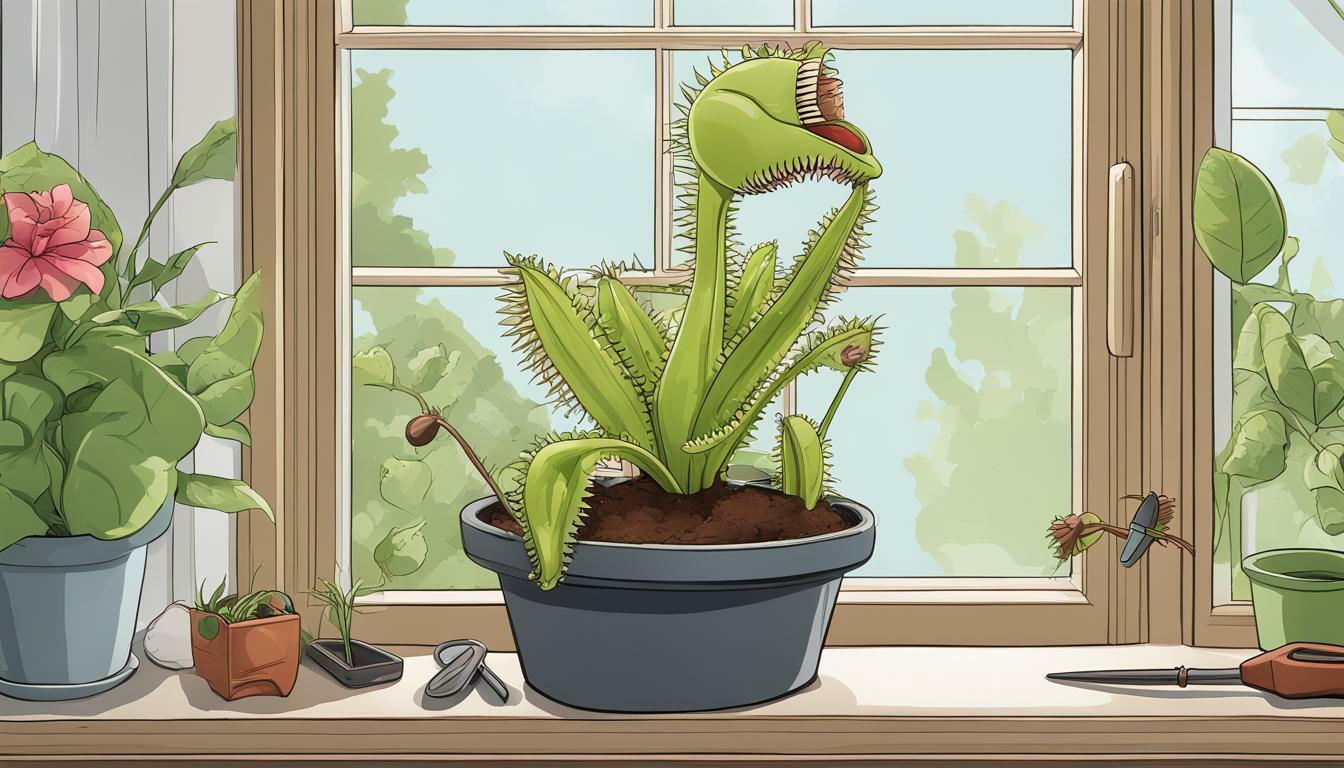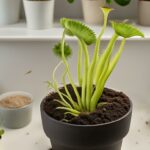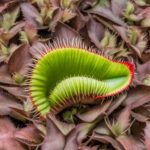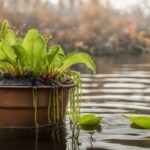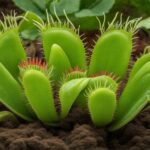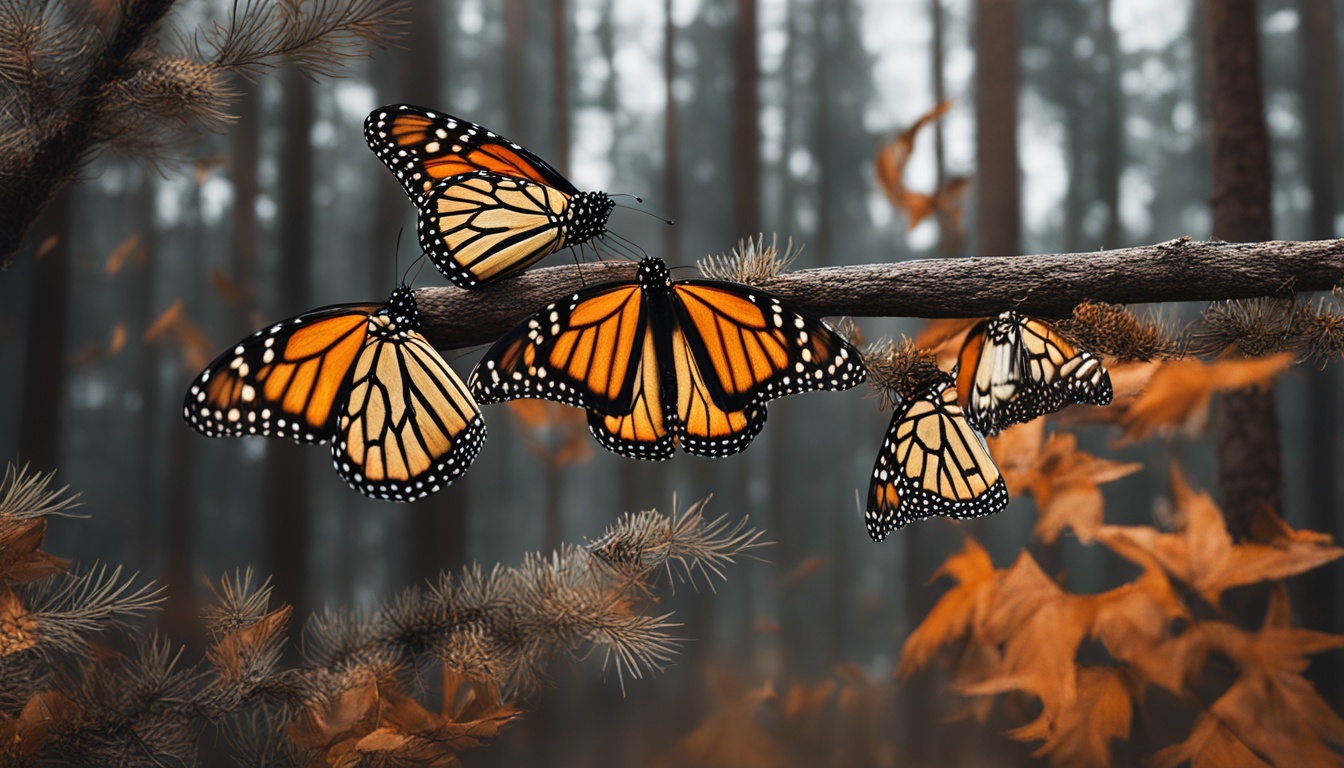Have you ever been fascinated by the way a Venus flytrap catches insects with its specialized leaves? If so, you might be considering getting one of these captivating plants for yourself. However, you may be wondering about the level of difficulty involved in keeping it alive. Fear not; with the right care, you can successfully maintain a healthy Venus flytrap.
In this section, we will explore the care tips, instructions, and requirements for keeping a Venus flytrap alive. We will also discuss some common mistakes to avoid in order to ensure the survival of your plant.
Key Takeaways:
- Proper care is essential for maintaining a healthy Venus flytrap
- Understanding the specific care requirements is crucial for success
- Common mistakes can be detrimental to the survival of your plant
Understanding Venus Flytrap Care
If you are new to Venus flytrap care, it can seem daunting to keep such a unique plant alive. However, with the right information and care, you can provide the optimal environment for your Venus flytrap to thrive. Below are some Venus flytrap care tips, instructions, and requirements to follow:
Sunlight
Venus flytraps require bright sunlight to grow and thrive. In their natural habitat, they receive direct sunlight for at least six hours a day. Indoors, place your Venus flytrap near a west or south-facing window and in a location that receives direct sunlight for a minimum of four hours per day. If sunlight is limited, consider using artificial lighting, such as fluorescent or LED bulbs.
Temperature
Venus flytraps prefer warm environments with temperatures between 70-80°F during the day and 50-60°F at night. Avoid exposing your plant to extreme temperatures, as they can cause damage and even death to your Venus flytrap.
Watering
When it comes to watering your Venus flytrap, it is essential to use distilled or rainwater. Avoid tap water, as it contains minerals that can damage the roots. Keep the soil moist but not waterlogged, as overwatering can lead to root rot. In general, water your Venus flytrap every three weeks, or when the soil is dry to the touch.
Soil Conditions
Venus flytraps grow best in a mixture of sphagnum peat moss and perlite or sand. Avoid using regular potting soil, as it contains fertilizers that can harm your plant. Additionally, make sure the soil is slightly acidic, with a pH level between 4.5-5.5.
By following these Venus flytrap care instructions, along with other care requirements, you can provide the optimal environment for your plant to thrive and flourish.
Challenges in Venus Flytrap Care
While Venus flytraps are fascinating plants, they can present some unique challenges when it comes to caregiving. Here are some of the most common challenges you may face:
Pests
One of the biggest threats to Venus flytraps is pests, such as aphids, spider mites, and thrips. These tiny insects can damage the leaves and traps and even introduce harmful diseases to your plant. You can control pests with insecticidal soap or by introducing natural predators, such as ladybugs.
Diseases
Venus flytraps are susceptible to fungal and bacterial infections, especially if they are overwatered or exposed to high humidity. Be sure to water your plant only when the soil is dry to the touch and avoid misting the leaves. If you notice any signs of disease, such as blackened leaves or spots, remove the affected parts and treat the remaining plant with an appropriate fungicide or bactericide.
Dormancy Periods
Venus flytraps naturally go through a dormant period during the winter months, during which they stop growing and their leaves die back. While this is a normal part of their life cycle, it can be alarming for new owners who may think their plant is dying. To help your plant through its dormant period, reduce its watering and move it to a cooler location. New growth should appear in the spring.
Conclusion
By being aware of these challenges and taking the necessary precautions, you can ensure the long-term survival of your Venus flytrap. Remember to keep an eye out for pests and diseases, water your plant appropriately, and give it the right growing conditions. With the proper care, your Venus flytrap can thrive for years to come.
Avoiding Common Mistakes in Venus Flytrap Care
As a Venus flytrap owner, it’s important to avoid common mistakes that can harm your plant. Here are some of the most common Venus flytrap care mistakes to avoid:
- Overfeeding: While it’s tempting to feed your Venus flytrap insects frequently, this can actually harm its health. Overfeeding can cause the traps to become weak and eventually die off. Stick to feeding your Venus flytrap one or two insects per month.
- Improper watering: Venus flytraps thrive in a moist environment, but overwatering or using distilled or tap water can be harmful. Use rainwater or a mixture of distilled and rainwater to keep the soil moist but not soaked.
- Incorrect handling: Venus flytraps should never be touched or triggered by hand, as this can cause damage to the traps. If you need to move your plant, do so by holding the pot or gently lifting the plant from the base.
By avoiding these mistakes, you can provide your Venus flytrap with the best care possible and increase its chances of survival.
Conclusion
Caring for a Venus flytrap can be challenging, but with the right knowledge, you can provide the best possible environment for your plant to thrive. Remember to follow the care tips and instructions provided, including proper sunlight, temperature, watering, and soil conditions. It’s also important to be aware of the challenges you may face, such as pests, diseases, and dormancy periods, and take steps to overcome them. By avoiding common mistakes, such as overfeeding and improper watering, you can increase the chances of your Venus flytrap surviving and thriving.
Overall, the key to successful Venus flytrap care is patience, attention, and dedication. With these qualities, and the information provided in this article, you can become a confident caretaker of this fascinating and unique plant. By implementing these Venus flytrap care tips, you can create a Venus flytrap survival guide that will ensure your plant thrives for years to come.
Is it Difficult to Keep a Venus Flytrap Alive in a Bedroom Setting?
Is it difficult to keep a Venus Flytrap alive in a bedroom setting? Venus flytrap care in bedroom requires attention to temperature, humidity, and sunlight. In a controlled indoor environment, it’s essential to maintain consistent moisture levels and ensure the plant receives adequate sunlight. With proper care and attention to these factors, it is possible to successfully cultivate a Venus Flytrap in a bedroom.
FAQ
Q: How hard is it to keep a Venus flytrap alive?
A: Keeping a Venus flytrap alive requires some level of care and attention, but it is not overly difficult if you follow the proper care tips and guidelines.
Q: What are some Venus flytrap care tips?
A: Some important Venus flytrap care tips include providing ample sunlight, maintaining the right temperature and humidity levels, using distilled water or rainwater for watering, and using a well-draining, acidic soil mix.
Q: How often should I water my Venus flytrap?
A: Venus flytraps require a moist environment, but it is crucial not to overwater them. Typically, watering once every one to two weeks is sufficient, ensuring the soil remains damp but not waterlogged.
Q: How do I feed my Venus flytrap?
A: Venus flytraps are carnivorous plants that capture insects for nutrition. They do not require regular feeding, as they can obtain nutrients from the insects they catch. However, if you choose to feed them, use small live insects such as fruit flies or gnats, and avoid feeding them larger insects that may damage the traps.
Q: What are some common mistakes to avoid when caring for Venus flytraps?
A: Some common mistakes to avoid include overfeeding the plant, using tap water or mineral-rich water for watering, allowing the plant to dry out, and touching or stimulating the traps unnecessarily.

